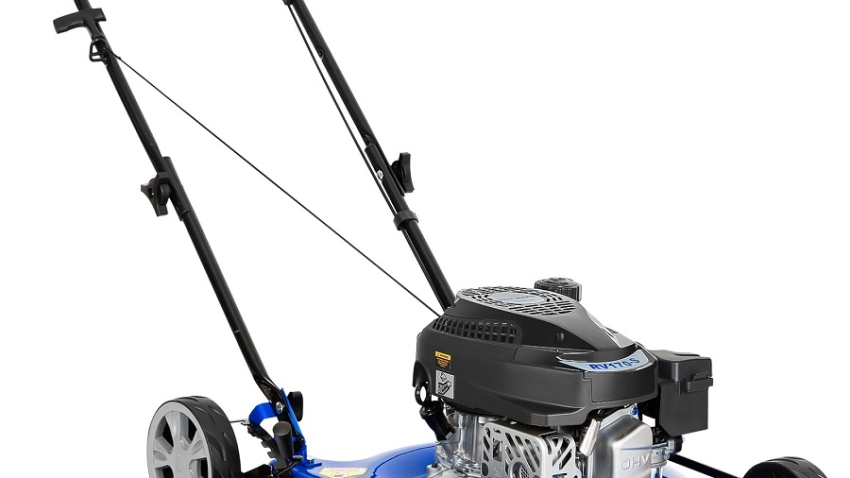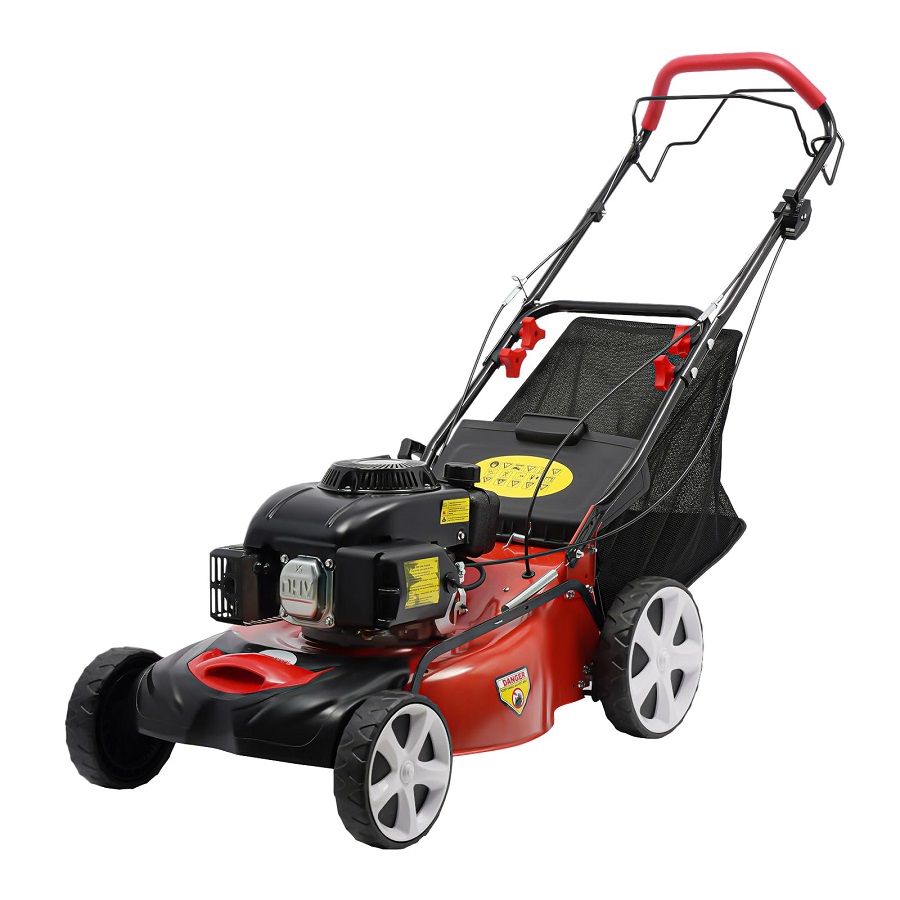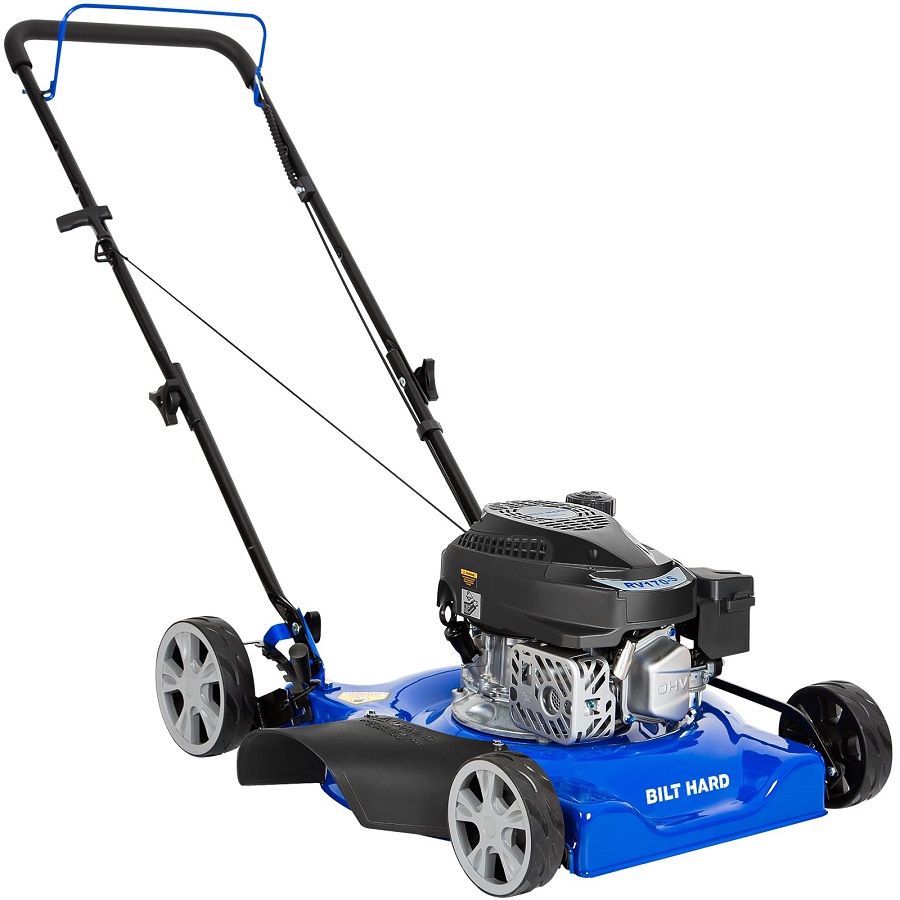
What Oil for Lawnmower: Choosing the Right Oil for Lawnmower
Types of Lawnmower Oils
Choosing the right oil for your lawnmower is crucial for its longevity and performance. Generally, lawnmower engines require specific types of oils based on the engine design. Here are the primary oils you can consider for your lawnmower:
- SAE 30: This is the most common oil for small engine lawnmowers, particularly for warmer temperatures. It provides a stable viscosity for consistent operation.
- SAE 10W-30: This multi-grade oil works well in varying temperatures, which makes it suitable for changing weather conditions. It supports engine start-up in cold weather and provides good engine protection.
- Synthetic SAE 5W-30: Ideal for extreme weather conditions, synthetic oils offer better protection at lower and higher temperatures and can lead to better fuel economy.
- SAE 5W-30: Similar to its synthetic counterpart, this oil is suitable for colder climates, ensuring easier start-ups in low temperatures.
These oils differ mainly in their ‘weight’ or viscosity, which affects how they operate at different temperatures. Your lawnmower’s user manual should specify the recommended oil type. If you are unsure, consulting with a professional or the manufacturer can guide you in selecting the proper oil for your lawnmower. Keep in mind, using the right oil not only protects your engine but also can prevent costly repairs down the line. Regularly check your oil level and replace it according to your manufacturer’s guidelines to keep your lawnmower running smoothly.
 The Importance of Oil Viscosity in Lawnmowers
The Importance of Oil Viscosity in Lawnmowers
Understanding oil viscosity is key to keeping your lawnmower in top shape. Viscosity refers to the thickness of the oil. It affects how the oil flows inside the engine. In simple terms, it’s the oil’s resistance to flow. The right viscosity ensures the engine runs smoothly. It helps reduce wear and tear by providing a consistent lubrication layer.
On the label of lawnmower oil, you will often see ‘W’ ratings. For example, SAE 5W-30. The ‘W’ stands for winter. The number before it shows how well the oil flows in cold weather. The number after indicates the oil’s flow at normal engine temperatures. A lower first number means the oil is less thick and flows better in cold. This is vital for easy start-ups on chilly mornings.
If the oil is too thick, it won’t flow to all parts of the engine quickly. This can cause parts to rub together without proper lubrication. Over time, it can lead to engine damage. Conversely, if the oil is too thin, it may not provide enough protection for the engine at high temperatures. It is crucial to get the balance right for your climate and lawnmower use.
Regularly checking the oil level will help you catch any viscosity issues early. If the oil looks too thick or too thin, it might be time for a change. Always use the type of oil recommended by your lawnmower’s manual. If you notice oil that is too runny or too sludgy, it’s a sign that your lawnmower may not be using the right viscosity oil.
What oil for lawnmower use, especially in terms of viscosity, directly impacts your machine’s longevity and performance. With this in mind, always choose the appropriate viscosity grade when selecting oil for your lawnmower.
Seasonal Considerations for Lawnmower Oil
Seasonal changes affect what oil for lawnmower is ideal. In colder months, you’ll want an oil that flows well at low temperatures. Look for oils with a low ‘W’ rating, like SAE 5W-30. These provide easier startups in winter. As the weather warms up, a higher viscosity oil, such as SAE 30, may be more suitable. It’s designed to perform better in hot conditions. To switch between seasons seamlessly, consider a multi-grade oil like SAE 10W-30. This type of oil can adapt to a wide temperature range.
Remember to always check your lawnmower’s manual before choosing oil. It may suggest different oils for different seasons. If you’re unsure, ask a professional for advice on what oil for lawnmower use is best in your area. By choosing the correct oil for the season, you help your lawnmower work efficiently and prevent engine wear.
Synthetic vs. Conventional Oil: Which Is Best for Your Lawnmower?
Choosing the right oil for your lawnmower is not just about viscosity. Another important decision is choosing between synthetic and conventional oils. Both types have their benefits and drawbacks, and the best choice depends on various factors like your lawnmower model, operating conditions, and maintenance habits. Let’s explore the differences to help you decide which is best for your lawnmower.
Synthetic Oil:
- Offers more protection in extreme temperatures, both low and high.
- It flows better at low temperatures, making it ideal for cold starts.
- Provides enhanced engine cleanliness, reducing sludge and deposit build-up.
- It can sometimes extend the time between oil changes.
However, synthetic oil may come at a higher cost compared to conventional oil. Despite the cost, the long-term benefits, such as improved fuel economy and reduced engine wear, often justify the investment.
Conventional Oil:
- Works well under normal operating conditions.
- It is more budget-friendly, appealing to those who prefer cost-effective maintenance.
- Has a shorter change interval, which ensures fresh oil more frequently.
Conventional oil might be the right choice if you have a standard lawnmower used under typical conditions. It’s essential to remember that conventional oil needs changing more often, especially in harsh operating environments.
In conclusion, if you use your lawnmower in extreme weather conditions or want the added protection for your engine, synthetic oil is your best bet. For those with a tighter budget or less demanding lawn care needs, conventional oil will do the job. Ultimately, check your lawnmower’s user manual for the manufacturer’s recommendation, as it should guide your decision on what oil for lawnmower is best. Regular oil checks and changes are vital regardless of the type you choose.
How to Check and Change Lawnmower Oil
Maintaining the proper oil level is crucial for your lawnmower’s performance. Routine checks and changes can prevent engine problems. Here’s a simple guide to ensure you handle it right.
Step 1: Prepare Your Mower
Turn off your lawnmower and wait for the engine to cool. Park it on a level surface to get an accurate reading. Have your tools and replacement oil ready.
Step 2: Locate the Dipstick
Find the oil cap on your lawnmower. It often comes with a dipstick attached. Clean around the area to prevent dirt from entering the engine.
Step 3: Check Oil Level
Pull out the dipstick and wipe it clean. Insert it back without screwing it in. Pull it out again to check the oil level. It should be between the marked lines.
Step 4: Drain Old Oil
If the level is low or oil is dark, it’s time for a change. Unscrew the drain plug and let the old oil flow out into a container. Tilt the mower if necessary to ensure complete drainage.
Step 5: Add New Oil
Once drained, replace the plug and refill with new oil. Use what oil for lawnmower is recommended by your manual. Pour slowly and check with the dipstick as you go to avoid overfilling.
Step 6: Dispose of Old Oil
Take the used oil to a recycling center. Never dispose of it in the garbage or down drains.
Regular oil checks and changes keep your lawnmower running smoothly. Use the correct type and maintain the right level. Your lawnmower will last longer and perform better with proper oil management.
Lawnmower Oil Capacity and Measurement
When maintaining your lawnmower, knowing the oil capacity is vital. Each lawnmower model has a specific oil volume it can hold. This is crucial for optimal engine functionality. Too little oil can lead to friction and overheating. Too much oil can cause leaks and poor running. Check your lawnmower’s manual for the exact capacity. Most push mowers hold between 15 to 18 ounces of oil. Riding mowers may require 48 to 64 ounces.
Measure the oil accurately to avoid engine issues. Use a clean funnel and measuring container. For precision, pour slowly and check the oil level as you fill. Stop when you reach the full mark on the dipstick. Never guess the amount; measure every time you add oil.
Understanding what oil for lawnmower capacity and measurement means helps prevent engine damage. By following these simple steps, you keep your lawnmower healthy for each season’s tasks. Stay diligent with oil checks to safeguard your machine’s longevity and performance.
Troubleshooting Common Lawnmower Oil Problems
When maintaining your lawnmower, you might encounter oil-related issues. Here are some common problems and how to fix them:
Low Oil Level
If you find your oil level is consistently low, it could mean a leak. Check for oil spots underneath your mower. Tighten any loose bolts or replace damaged seals.
Oil Leaks
Oil leaks can occur from worn seals or gaskets. Inspect your engine and replace any worn parts. Keep your lawnmower clean to spot leaks easily.
Dark or Dirty Oil
Oil can turn dark if it’s old or contaminated with debris. Regularly change your oil to prevent this issue. Make sure you’re using the right oil for your lawnmower, as specified in your manual.
Overfilled Oil
Too much oil can cause smoking or hard starting. Drain the excess oil until it reaches the proper level. Always measure your oil carefully when filling.
Oil Appears Milky or Frothy
If your oil looks milky, water may have contaminated it. This can happen from mowing on wet grass or from condensation. Change the oil and store your lawnmower in a dry place.
Engine Smoke
Blue or white smoke might indicate burning oil. Check for an overfilled crankcase or worn engine parts. Seek professional repair if the problem persists.
By addressing these common oil problems, you maintain your lawnmower’s performance. Always refer to your manual for what oil for lawnmower to use, and follow manufacturer guidelines for troubleshooting.
Best Practices for Lawnmower Maintenance and Oil Management
Maintaining your lawnmower requires attention to oil management. Follow best practices to keep it in prime condition. Here are key tips to help you manage your lawnmower’s oil effectively:
- Regularly Check Oil Levels: Always monitor oil levels to ensure your engine is lubricated. This prevents wear and keeps performance high.
- Choose the Correct Oil Type: Consult your owner’s manual to find what oil for lawnmower is best. The right type protects your engine.
- Consider Seasonality: Select an oil grade suitable for current temperatures. Warmer weather usually needs thicker oil, whereas colder weather calls for thinner oil.
- Opt for Quality: Choose high-quality oils, whether synthetic or conventional. Quality oils better shield your engine.
- Change Oil as Recommended: Do not extend oil change intervals. Fresh oil minimizes debris buildup and maintains engine health.
- Dispose of Oil Properly: After changing the oil, take it to a recycling center. Proper disposal protects the environment.
- Keep the Engine Clean: Clean around the oil fill area to avoid dirt entering the engine when you add or check oil.
- Monitor for Leaks: Always check for signs of oil leaks. Fix leaks fast to avoid engine damage.
- Use Proper Tools: Have the right tools for oil changes. This includes funnels, containers, and correct-sized wrenches.
Following these best practices for lawnmower maintenance and oil management will ensure your lawnmower lasts longer and operates smoothly. Regular checks, using the right oil, and proper disposal contributes to both your lawnmower’s efficiency and sustainability.














Leave a Reply